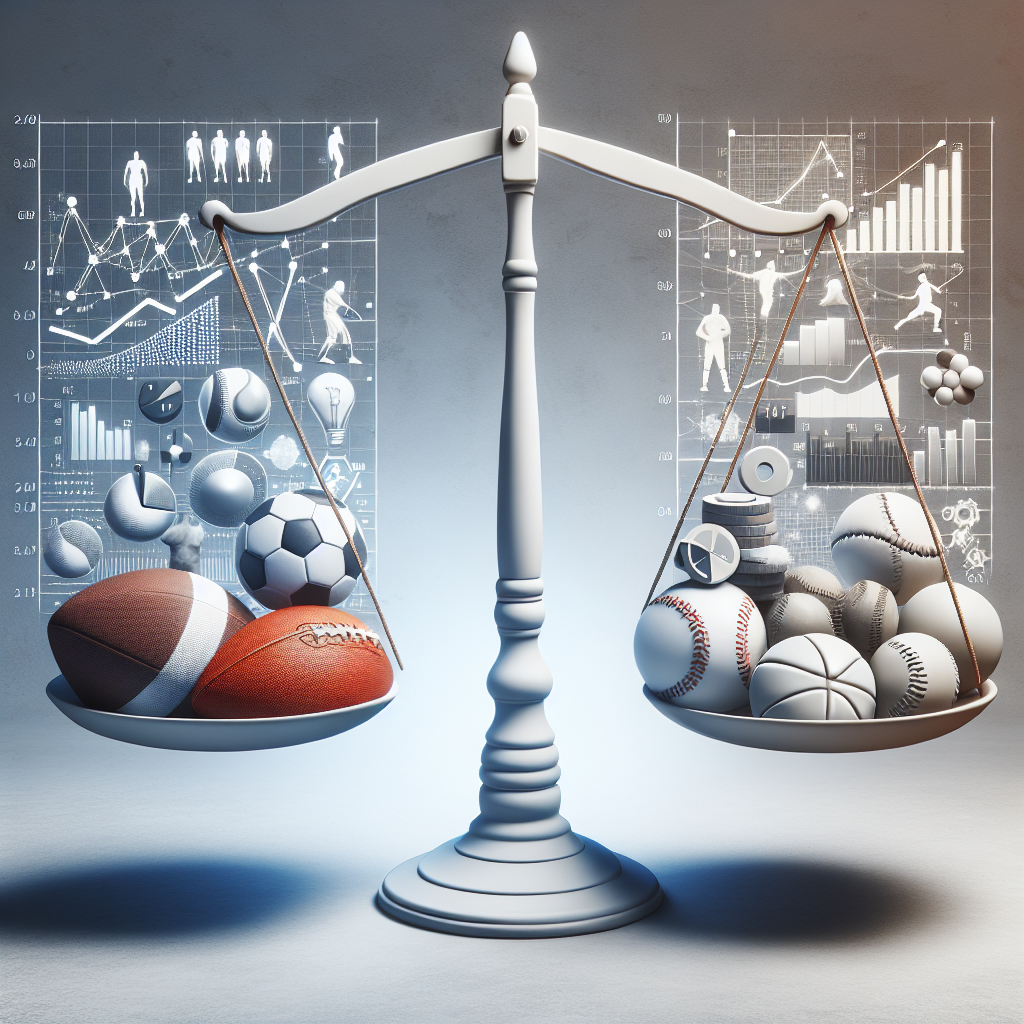Introduction
In the ever-evolving world of sports, advanced statistics are revolutionizing the way teams strategize, scout, and compete. By 2025, the integration of data analytics has transcended traditional metrics, allowing athletes and coaches to glean crucial insights that drive performance and inform decision-making. From baseball to basketball, advanced stats are changing the game, transforming how fans perceive sports, and enhancing the overall viewing experience. In this article, we will explore the various ways in which advanced statistics are reshaping the athletic landscape, examining their impact on player evaluation, game strategy, fan engagement, and more.
Understanding Advanced Statistics in Sports
Advanced statistics, often referred to as “analytics,” encompass a range of complex metrics beyond traditional statistics like points scored and batting average. These metrics delve deeper into individual player performance, team dynamics, and game outcomes. In 2025, teams have embraced technologies such as GPS tracking, wearables, and machine learning algorithms to analyze players’ movements, efficiency, and fatigue levels. Metrics like Player Efficiency Rating (PER) in basketball, Wins Above Replacement (WAR) in baseball, and Expected Goals (xG) in soccer have become essential for creating a 360-degree view of an athlete’s contributions on the field.
Moreover, advanced stats empower coaches and analysts to predict outcomes with astonishing accuracy. For instance, basketball teams utilize Shot Quality metrics to assess not just whether a shot goes in but the conditions under which it was taken. Such insights inform coaching decisions about player rotations and lineups, often leading to significant competitive advantages. As teams increasingly prioritize data-driven strategies, understanding advanced statistics has become a critical skill for coaches and executives alike.
Transforming Player Evaluation and Recruitment
One of the most significant impacts of advanced stats is in player evaluation and recruitment. In 2025, professional teams are leveraging data analytics to identify hidden talent and make informed decisions, vastly improving their draft and trade processes. Scouting departments, once reliant on subjective assessments, now utilize data that tracks everything from an athlete’s sprint times to their shot selection. This information enables scouts to make comparisons across different players and leagues, revealing prospects that may have slipped under the radar in traditional assessments.
Additionally, advanced stats have improved the accuracy of contract negotiations and player valuations. For instance, by analyzing detailed performance data, teams can better assess a player’s value, factoring in their on-field contributions, injury history, and potential for improvement. This more comprehensive approach allows teams to negotiate contracts that reflect true performance levels, thereby fostering more equitable terms that can incentivize player development and retention.
Influencing Game Strategy and Coaching Decisions
Game strategy has undergone a substantial transformation due to advanced statistics. In sports such as football and basketball, coaches now tailor their strategies based on granular data analysis. For example, in basketball, teams are more likely to employ “small ball” strategies or optimize shot selection based on statistical probabilities derived from shooting zones. This shift challenges traditional tactics, as teams continuously adapt to leverage their strengths while exploiting the weaknesses of their opponents.
Moreover, advanced stats can inform in-game adjustments. Coaches have access to real-time data that provides insights into player performance, allowing for quicker decision-making regarding substitutions and tactical shifts. By analyzing opponents’ tendencies through the lens of advanced statistics, teams can craft game plans that anticipate their adversaries’ moves, ultimately elevating the competitive landscape.
The coaching profession itself has also evolved with the rise of analytics. Coaches now often employ analytics experts to decode game footage, assess lineup matchups, and evaluate plays—turning once-abstract decisions into exact science. This collaboration between analysts and coaching staff is a defining feature of modern sports strategy, demonstrating how advanced metrics are intersecting with intuition and experience.
Enhancing Fan Engagement and Experience
Advanced statistics are also changing the viewer experience, allowing fans to engage with their favorite sports in unprecedented ways. In 2025, major sports leagues integrate analytics into broadcasts, providing viewers with deeper insights into player performance and game likelihoods during matches. Tools like augmented reality (AR) and virtual reality (VR) further enhance this engagement, offering fans real-time stats on player movements and play probabilities right from their living rooms.
Social media platforms have become a new frontier for fan engagement, where data visualization tools allow fans to share insights or discuss performances based on advanced stats. Analytics reports are now routinely shared across platforms, enabling fans to delve into complex topics like shot efficiency or player impact metrics, thus fostering a more informed and passionate audience.
Moreover, fantasy sports platforms have seen a surge in popularity largely due to the integration of advanced statistics. Players now rely heavily on detailed statistical models and projections that utilize sophisticated algorithms, making each fantasy league more competitive than ever. This merging of advanced stats with fantasy sports not only enriches the experience for players but also enhances their understanding of player performance and capabilities throughout the season.
The Future of Advanced Statistics in Sports
Looking ahead, the role of advanced stats in sports is set to expand exponentially. By 2025, we can expect further innovations in data collection and analysis technologies that will revolutionize the sports landscape. The development of artificial intelligence (AI) and machine learning will continue to enhance predictive analytics, providing teams with even more nuanced insights into player development, scouting, and game strategy.
Furthermore, wearables and biometric sensors will yield real-time data on athletes’ health and performance, allowing for preventative measures that can significantly reduce injuries. Enhanced data collection methods will enable teams to monitor players’ fatigue levels, recovery statuses, and even psychological well-being, creating a multifaceted approach to athlete management. The integration of this data will not only influence gameplay but also revolutionize training regimens and athlete longevity.
In addition, the democratization of advanced statistics through accessible software and apps will empower amateur athletes and grassroots programs to leverage data analytics in their training. This shift could lead to a new generation of players who are not only athletes but also data-savvy individuals, further embedding the importance of analytics into the fabric of sports culture.
Conclusion
Advanced statistics are undeniably changing the game across all realms of sports. From transforming player evaluation and recruitment to enhancing game strategy and fan engagement, the implications of analytics are profound. As we look toward the future, continuous advancements in data technology will shape how teams prepare, compete, and interact with fans. The evolution of advanced stats is a testament to the power of information in sports, heralding a new era where every play, every athlete, and every moment is analyzed to perfection.
FAQs
What are advanced stats in sports?
Advanced stats in sports refer to complex statistics that provide deeper insights into player performance, team dynamics, and game outcomes compared to traditional metrics. Examples include metrics like Player Efficiency Rating (PER), Wins Above Replacement (WAR), and Expected Goals (xG).
How are advanced statistics used in player evaluation?
Advanced statistics are used in player evaluation to assess players’ true contributions beyond traditional stats. They help teams identify talent, optimize recruitment strategies, and negotiate contracts by analyzing detailed metrics on performance, efficiency, and consistency.
How do advanced stats improve game strategy?
Advanced stats improve game strategy by providing coaches with insights into player performance patterns and opponent tendencies. This data allows for tailored strategies and in-game adjustments, enabling a more tactical approach to competition.
In what ways do advanced stats enhance fan engagement?
Advanced stats enhance fan engagement by providing deeper insights into games through broadcasts and social media. Fans can interact with complex data, participate in fantasy sports based on analytics, and enjoy a more immersive experience during games.
What does the future hold for advanced statistics in sports?
The future of advanced statistics in sports includes advancements in artificial intelligence, machine learning, and real-time data collection via wearables. These innovations will enhance predictive analytics, improve athlete management, and democratize data use at all levels of sports.






